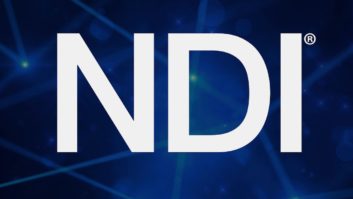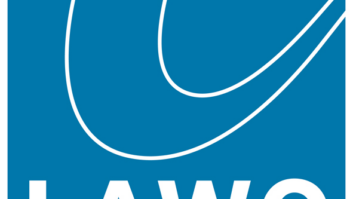Launched by NewTek at IBC 2015, Network Device Interface (or NDI as it’s more commonly known) is seen as a route into broadcast IP for companies who are not ready to adopt a full SMPTE 2110 workflow.
“If you want uncompressed, 2110 is fine,’ Marc Risby, managing director of NewTek’s UK distributor DigiBox tells TVBEurope, but if you’re happy with something that is just a little bit compressed, then NDI is so much simpler.”
“There are some differences, 4K is 12 gig in SMPTE terms, it’s 220 megabits in NDI, so you can use a standard ethernet switch, not a-carrier grade ethernet switch, which means the pricing of kit just comes down so much.”
According to Risby there are “billions” of users that can take advantage of NDI, particularly since Microsoft updated Skype to include the technology, adding 1.5 billion users of NDI over night.
“In general, there are thousands and thousands of developers using NDI because NewTek made the SDK simple and available,” he adds. “Loads of people have implemented it and now it sits in Avid and Adobe products, as well as a number of broadcast vendors that support it from the hardware and software side.”
While Tier One broadcasters may be slow to adopt it fully, those working just below are picking up on it. “I think people have got a budget and need technology that is relatively quick to deploy,” adds Risby. “I’m not saying it answers everything, there’s absolutely a place for SMPTE and true standards-based products, but you’ve got to recognise the cost and the implementation difficulties.”
One of the ares of broadcast production Risby believes NDI can be a big change is in news: “The TriCaster 2 Elite has live call connect, and what’s really cool about that is that you can use it to pull in Zoom, Teams or Skype calls, and it will create new NDI sources from the window. If it’s a tiled screen, with multiple users, TriCaster takes each head and makes an NDI source from it and you can mix that into your programme.
“A few years ago, broadcasters wouldn’t Zoom and Skype, but now we’re putting it in primetime. Some of the TriCaster tools are great for that. You can use it as a tool that can act as a central point for bringing all of your content in.
Risby adds that he believes the pandemic has democratised news content, “People who would never have their voice on TV can be heard, because it’s no longer about who lives closest to the studio and who can you get in front of a camera.
“Now, you can get whoever is the best person to talk about the subject because they can use Zoom or Teams of whatever. Yes, the quality of some of that can be appalling if you’re not careful with cameras, lighting and microphones, and you might have to put a broom up against the door so the kids don’t come in!, he laughs, “but I think news has really improved lately because of the the diverse voices that we’re hearing. The news broadcasters are more tolerant now compared to how they were pre-Covid.”
In July 2021, NewTek announced the launch of NDI 5, which according to Risby is “a game changer”. He adds: “It enables users to take a remote network and all the sources on that network, assuming you give them access, appear on your network back at base.
“So I could take control of a PTZ camera in a remote studio, or I can send them back Tally and audio and video feeds from my home base system to the remote studio and connect them as if they were in the same building. It connects them in a secure connection over the public internet and just makes all the NDI stuff expand out to wherever you want to do it. That’s going to be huge!” he adds.






